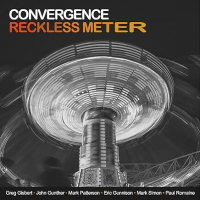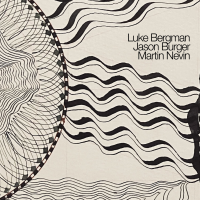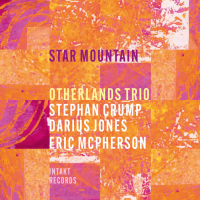Home » Jazz Articles » Album Review » Frank Zappa: Funky Nothingness
Frank Zappa: Funky Nothingness
Posthumous releases of Zappa's music have been a mixed bag, ranging from band rehearsals with less than high fidelity sound, expanded reissues which include works in progress prior to overdubbing and editing, expanded versions of previously issued albums and CDs or CD sets of completely unreleased (or mostly so) music. This collection falls into the latter category and is a release which long-time Zappa fans have dreamed of being discovered.
With the success of his 1969 LP Hot Rats, Zappa continued to explore mostly instrumental blues, utilizing a core band which appeared on that LP, including keyboardist, multi-reed player and rhythm guitarist Ian Underwood, violinist, organist and vocalist Don "Sugar Cane" Harris, Wrecking Crew bassist Max Bennett and drummer Aynsley Dunbar. Aside from the title track, which is heard in two versions with other musicians recorded in 1967 during the making of Uncle Meat, this is the group heard throughout the rest of the 3CD set, although the 2 LP edition simultaneously released with it omit some of the tracks found in this set.
It is difficult to tell how long this band was rehearsing and recording, though at least two concerts took place, one in the San Diego Sports Arena on February 8th, then another on March 7th at the Grand Olympic Auditorium in Los Angeles, part of which appeared on the bootleg Hot Rats -Live at the Olympic, an audience recording. The studio sessions took place in early 1970, but the band clearly had a grip on Zappa's new compositions and arrangements, playing them with the intensity of a live set of regular repertoire. In this period of his career, Zappa enjoyed leading extended jams in the studio, even if the final result was too long to release on LP. He was a creative tape editor who could distill the best segments from a long performance into an effective shorter track.
The two 1967 tracks are miniatures entitled "Funky Nothingness," a slow blues with acoustic guitar, bass and a mostly wordless vocal, along with the electric "Fast Funky Nothingness," which is somewhat reminiscent of Zappa's composition "Speed Freak Boogie," though it is quickly faded out.
Among Zappa's many interests were vintage R&B songs from the '50s. The playful medley of two hits by Hank Ballard. "Work With Me Annie" and "Annie Had A Baby" features Harris' strong vocal and intense violin, with Zappa's unique guitar as seasoning. "Love Will Make Your Mind Go Wild" is another terrific Harris vocal feature, although the introduction is reminiscent of an unissued version of Zappa's "My Guitar Wants To Kill Your Mama" which ended up on bootleg LPs in the early '70s. A huge surprise is Zappa's lead vocal in an extended workout of bluesman Lightnin' Slim's "I'm A Rollin' Stone," this twelve-plus-minute workout never loses steam with Zappa's guitar taking center stage, though Harris and Underwood (on organ) shine, with the playing of Bennett and Dunbar adding the perfect backdrop. There are no fewer than three versions of "Chunga's Revenge," the first being a nine-plus minute basement jam from his Laurel Canyon home which sounds like an early rehearsal with slightly less fidelity than the two studio takes. Both Take 5 and Take 8 feature Ian Underwood playing electric alto saxophone with a wah-wah pedal and "Sugar Cane" Harris on organ, with superb support from Bennett and Dunbar. Underwood simulates an electric guitar with his brilliant, intricate solos, though in both takes, strong solos by Zappa, Harris and Dunbar are featured as well. Zappa's "The Clap" was a percussion solo he played on the album Chunga's Revenge, though the two versions here reveal his fascination with polyrhythms and finding unique effects. Part I is over eleven minutes, while Part II is just over four minutes, both considerably longer than the originally issued track which was edited down from them. It isn't surprising to hear Zappa on drums, since he first played them before switching to guitar and he joined Ruth Underwood on stage to play percussion during early '70s concerts. However, the biggest treasure is the discovery of two complete takes, plus a false start, of the little known composition "Twinkle Tits," an outstanding instrumental jam which fuses several different genres into a explosive force. Take 5 is sixteen minutes long and the best of the three, with terrific solos all around, with its exotic Middle Eastern-influenced introduction which includes a bit of honky-tonk piano, acoustic bass, marimba and a guitar which could only be Zappa. Yet, as the tempo increases, the bluesy element takes prominence, while Harris shares solo honors with Zappa for his high energy. Take 8 is nearly twenty minutes long and features a blistering Zappa guitar solo, though the overall take doesn't quite reach the heights of the shorter version. The false start of under a minute is included for historic interest, as Zappa usually bypassed including partial takes unless he found them amusing. Another find is an eighteen-minute unedited master of Zappa's masterpiece, "Transylvania Boogie," which sounds quite different from the version issued on the album Chunga's Revenge, though the last five-and-a-half minutes of it sound like this segment was used for the basic track on the original LP. Zappa steals the show with his lengthy improvisation, while the rhythm section keeps the fire going throughout the jam, with Underwood's sublime, bluesy organ solo adding to its value.
The two versions of "Sharleena" contrast with the performance heard on Chunga's Revenge, as Harris had left Zappa by the time it was recorded and bassist Jeff Simmons joined Zappa for the lead vocals with backing vocals by Howard Kaylan and Mark Volman. These two takes feature Harris with Zappa on lead vocals, buoyed by Harris' bluesy violin and Zappa's piercing guitar, both of which are far more interesting than the issued version. Bonus discoveries include "Halos And Arrows," a fascinating instrumental with two separate guitars, rhythm guitar and bass, along with the breezy, soulful instrumental "Khaki Sack."
Not long after these Hot Rats sessions were completed, Zappa's focus turned to completing his orchestral work "200 Motels," which was premiered with Zubin Mehta and the Los Angeles Philharmonic at UCLA's Pauley Pavilion on May 15, 1970, with a newly assembled group of Mothers, including Underwood and Dunbar. The suite was rewritten prior to making the film and soundtrack the following year. It is unclear whether Zappa disbanding Hot Rats or the departure of "Sugar Cane" Harris to record as a solo artist resulted in the demise of the band. Vocalists Howard Kaylan and Mark Volman attended his UCLA concert and Zappa soon after launched a new edition of The Mothers which included them, creating a new repertoire of works which were a hybrid of comedy, skits and suggestive lyrics, with the occasional instrumental. As Zappa said in a 1989 phone interview, "It wasn't really a great band, but we had a lot of laughs."
This release is available as a 2 LP set, though the best option, which is also the most complete, is the expanded 3 CD set, which also contains a 28 page booklet with session photoswhile the download also includes all tracks. Disc 1 of the 3 CD deluxe set contains the material which Zappa selected and put together, while discs 2 and 3 in the expanded set have the alternate takes and edits and other unissued material. Both vintage Zappa mixes and recent mixes by Craig Parker Adams are utilized, with top notch mastering by John Polito.
This historic discovery of unissued studio performances by Frank Zappa will be on many critics' top ten lists for 2023 and it is highly recommended for anyone who owns Zappa's landmark Hot Rats album. The uncovering of more treasures is eagerly awaited, especially if the vault meisters can uncover a soundboard recording of the 1970 bootleg LP by Zappa & Hot Rats.
Track Listing
CD 1: Funky Nothingness - The Album
Funky Nothingness; Tommy/Vincent Duo I; Love Will Make Your Mind Go Wild; I'm a Rollin' Stone; Chunga's Revenge (Basement Version); Basement Jam; Work With Me Annie / Annie Had a Baby; Tommy/Vincent Duo II; Sharleena (1970 Record Plant Mix); Khaki Sack; Twinkle Tits.
CD 2: Zappa/Hot Rats ’70 Session Masters and Bonus Nothingness
Chunga’s Revenge; Love Will Make Your Mind Go Wild (Take 4); Transylvania Boogie (Unedited Master); Sharleena (Unedited Master); Work with Me Annie/Annie Had a Baby (Alternate Edit); Twinkle Tits (Take 1, False Start); Twinkle Tits (Take 2).
CD 3: Zappa/Hot Rats ’70 Session Masters and Bonus Nothingness
The Clap (Unedited Master-Part I); The Clap (Unedited Master-Part II); Tommy/Vincent Duo (Unedited Master); Chunga’s Revenge (Take 8); Halos and Arrows; Moldred; Fast Funky Nothingness.
Personnel
Frank Zappa
guitar, electricDon "Sugarcane" Harris
violinIan Underwood
organ, Hammond B3Max Bennett
bassAynsley Dunbar
drumsAdditional Instrumentation
Frank Zappa: vocals, drums, percussion; Sugarcane Harris: organ, vocals; Ian Underwood: woodwinds, piano, rhythm guitar.
Album information
Title: Funky Nothingness | Year Released: 2023 | Record Label: Zappa Records
Tags
PREVIOUS / NEXT
Support All About Jazz
 All About Jazz has been a pillar of jazz since 1995, championing it as an art form and, more importantly, supporting the musicians who make it. Our enduring commitment has made "AAJ" one of the most culturally important websites of its kind, read by hundreds of thousands of fans, musicians and industry figures every month.
All About Jazz has been a pillar of jazz since 1995, championing it as an art form and, more importantly, supporting the musicians who make it. Our enduring commitment has made "AAJ" one of the most culturally important websites of its kind, read by hundreds of thousands of fans, musicians and industry figures every month.
























